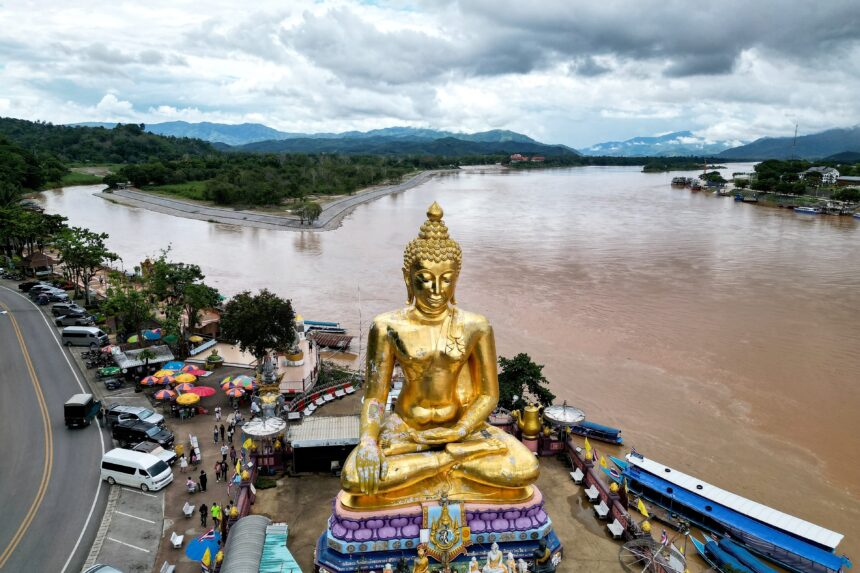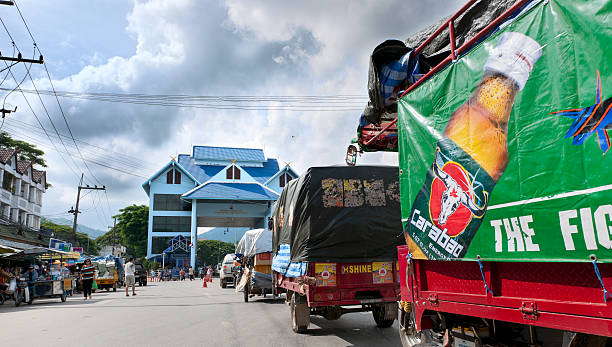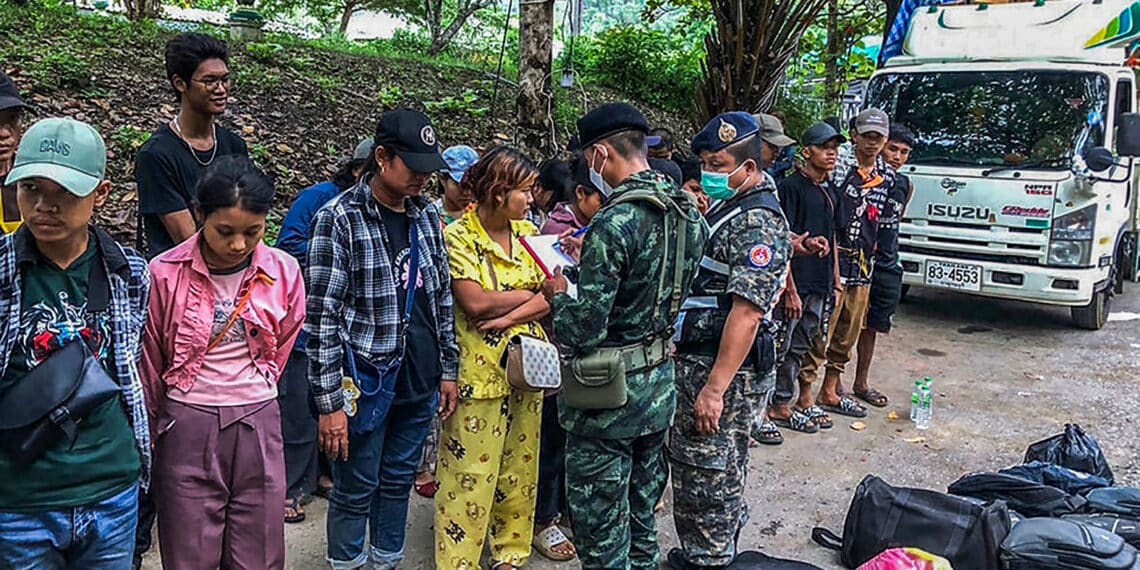CHIANG RAI – Instability in Myanmar has created a domino effect for Thailand, especially in Chiang Rai. Chiang Rai has become a centre for various disasters, many of which spill over from neighbouring countries. The most recent crisis is the contamination of toxic substances.
Chiang Rai now faces frequent disasters, including earthquakes, cross-border haze, flooding, landslides, and chemical pollution. Most of these problems start with human activities across the border, particularly in Myanmar.
When a neighbouring country like Myanmar becomes unstable, the impact ripples out. It affects Thailand in many ways, such as environmental damage, economic losses, migration, and cross-border crime. Solutions to these problems often depend on the stability and cooperation of neighbouring governments.
Locals in Chiang Rai say the province has become a disaster centre. In recent years, earthquakes from Myanmar have caused damage across several districts. The largest, with a magnitude of 6.3, had its centre in Mae Lao. Another significant quake last year started in Tachileik, only 42 kilometres from the border, and alarmed many residents.
The annual haze from across the border is a major issue. Chiang Rai has very few hotspots of its own, yet the province suffers from dangerous levels of air pollution, especially in Mae Sai, which sits right on the border. The source is clear: burning in neighbouring areas, not in Chiang Rai itself.
Flooding and landslides have also become more common. Last year, Mae Sai saw major floods several times, and Chiang Rai city also faced severe flooding. Now, toxic contamination is emerging as a new long-term threat to the ecosystem, proving even more damaging than floods.
These disasters are not just natural events. Apart from earthquakes, the main causes are human activities in nearby countries. Cross-border haze, flooding, and toxic substances come from burning, agriculture, and mining in Myanmar and nearby regions. The people of Chiang Rai, living close to the border, feel the impact directly.
Disasters Crossing the Border
Most of the disasters that hit Chiang Rai are the result of its location next to Myanmar and the human activities there. After March each year, Chiang Rai faces high levels of PM2.5, mainly from burning forests and farmland in Shan State, Myanmar.
Floods and landslides are linked to changes in the watershed areas, deforestation, and poorly managed mining. Toxic waste often flows into the Sai and Kok rivers, carried from upstream activities in Myanmar.
Dealing with cross-border haze has been a challenge for years. Many burn sites in Shan State are controlled by armed groups, which makes negotiation difficult. Over the last decade, agricultural expansion in Shan State has made the problem worse.
In the forests east of the Salween River, from Mae Hong Son northwards, fighting prevents anyone from tackling wildfires. These forested border areas are now being turned into farmland, which worsens both haze and flooding along the Sai and Kok river basins.
Mining in areas controlled by the armed Wa State Army (UWSA) is another concern. The political situation and ongoing conflicts make cooperation almost impossible. Even if Thai officials negotiate with the Myanmar government, they may not have the power to act on the ground.
The political chaos in Myanmar divides the country into warring factions, leaving the central government weak and unable to enforce rules. This directly affects the ability to address environmental problems at the border.
The Domino Effect of Instability
The disasters affecting Chiang Rai reflect the domino effect of instability between countries. In political science, this is the idea that if one country is unstable, its problems can quickly affect neighbouring states.
For example, economic problems in one country can halt border trade, reduce investment, and send job seekers fleeing across the border. Civil war or human rights abuses create waves of refugees, adding pressure to neighbouring countries. Cross-border crime, like drug trafficking or scams, spreads more easily when borders are poorly controlled.
Thailand has already felt the effects of instability in neighbouring countries in many ways. The impact is clear in the economy, in the arrival of refugees, and most recently, in cross-border criminal activities.
Environmental issues like air pollution, water contamination, and deforestation cannot be contained by borders. When neighbouring countries cannot manage their natural resources, the fallout crosses into Thailand. Chiang Rai faces this daily through polluted air, unsafe water, and damaged ecosystems.
This is a clear example of the spillover effect, where problems in one place quickly spread to those nearby. Stability in Myanmar is key to reducing these disasters in Chiang Rai. When our neighbours are stable, we are safer. When they are not, their problems quickly become ours too.
















